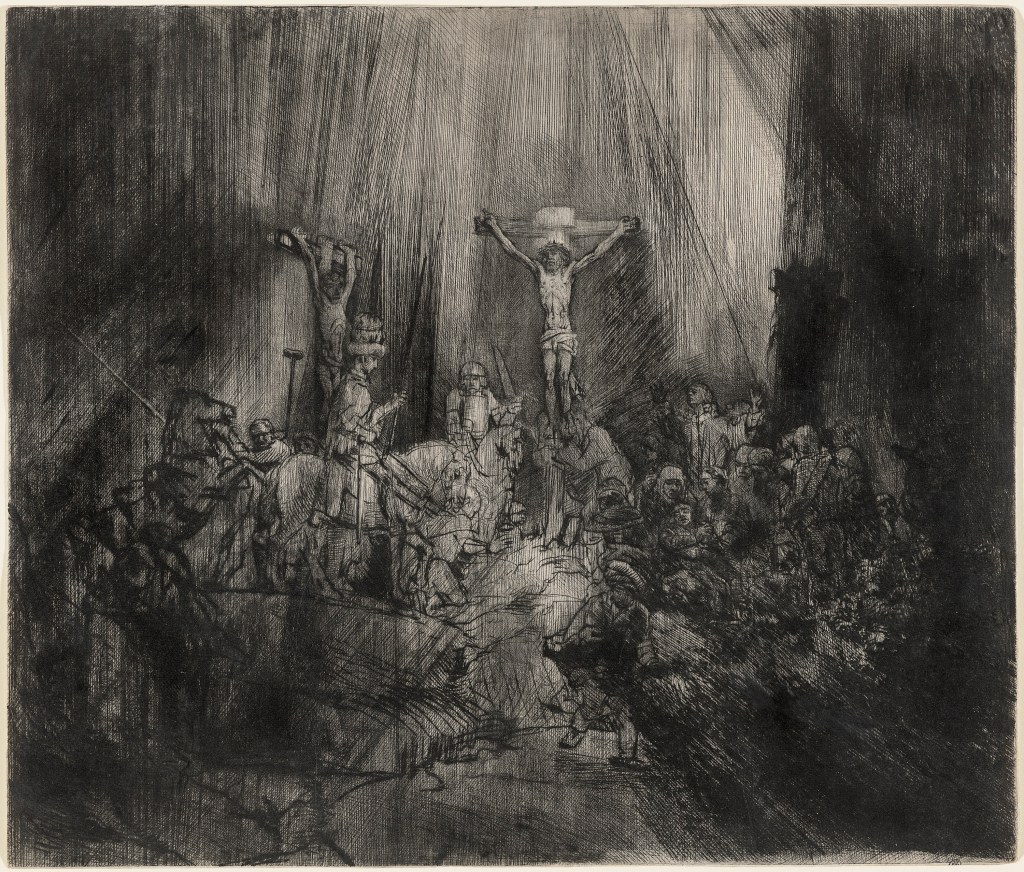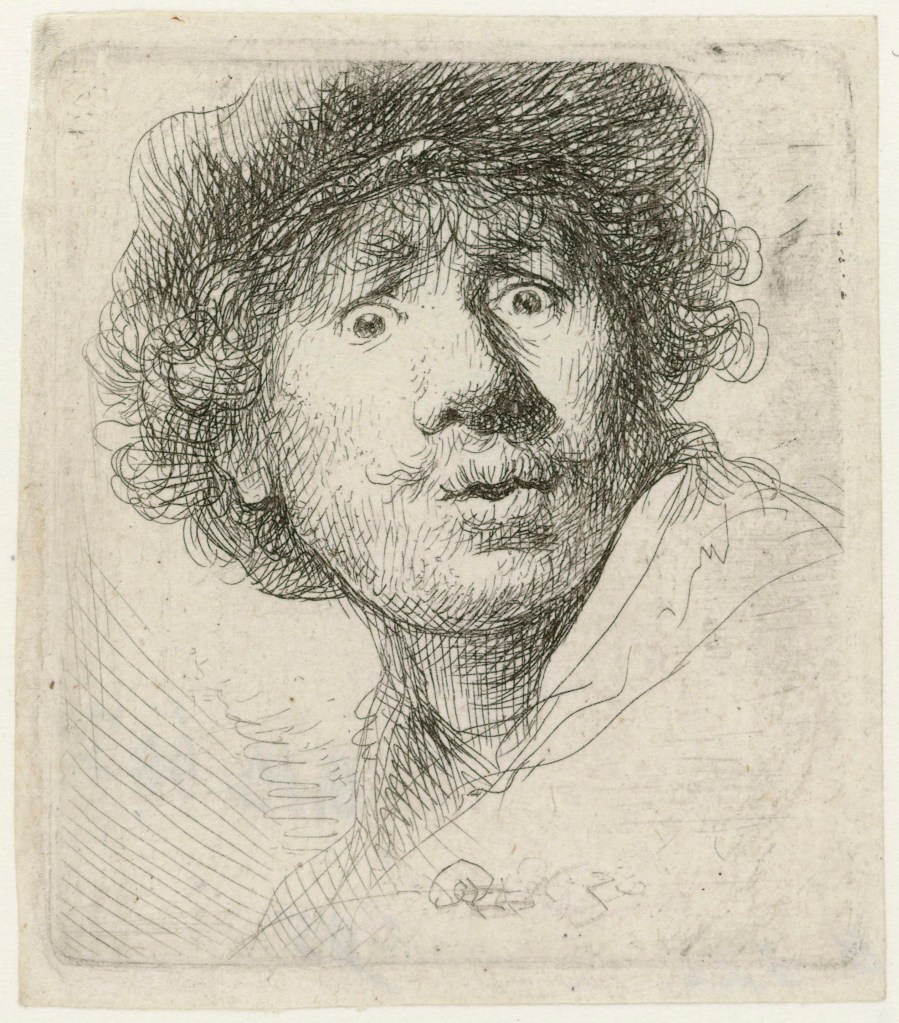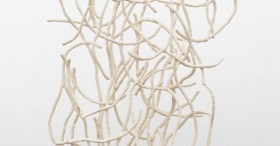We’ve become so used to the big, the brash and the frankly overwhelming with the winter masterpieces, the summer blockbusters and the bold and brilliant mash-ups in our state galleries that there is actually something surprisingly refreshing about an exhibition of the works of one of the great masters that actually feels intimate and almost modest in scale.
Rembrandt: True to Life may be the most comprehensive Australian exhibition of the 17th century Dutch artist’s oeuvre in over a quarter of century, but the majority of the works on view are prints from etchings, moderate in size but massive in scope and ambition.
Instead of a monster show that takes over the whole of a gallery and offers competing visions and perspectives, flooding the senses in all their ‘exhilarating but exhausting glory‘, these selected works from Rembrandt van Rijn (1606 – 1669) commandeer a few small rooms in one wing of the National Gallery of Victoria and the thoughtful curation means there is space and time to contemplate, consider and contextualise the work at your leisure.
Many of the works come from the NGV’s own extensive holdings, but the exhibition does include some judiciously chosen and placed oil paintings too, loaned from public collections in the Rijksmuseum in Amsterdam, the National Gallery of Art in Washington DC, the Louvre Museum in Paris, the Kunsthistorisches Museum in Vienna, and the Teylers Museum in Haarlem.
Read: Light event review, Dark Spectrum, Vivid Sydney
But each of these additions serves to highlight specific aspects of his artistry or punctuate life stages in Rembrandt’s remarkable four-decade career.
Beginning with his early work in Leiden in the 1620s, the exhibition traces his oeuvre to showcase his increasing skill and prestige, while elaborating on the milestones of his personal life – his marriage to Saskia, the loss of three of their four children, her early death, his subsequent relationships and financial ruin.

This all culminates in the magnificent 1659 self-portrait (loaned from Washington DC’s National Gallery of Art) showing the artist as a grizzled and careworn 53-year-old, post bankruptcy and a long, long way from an earlier self-portrait print made when he was at the height of his success, replete with fancy coat and jaunty headwear, leaning proudly on a wall (main image).

The exhibition also spans the breadth of his subject matter – from the portraits (self and otherwise) to nudes, religious and classical tableaus, and even landscapes, with oil paintings like The Mill (also on loan from Washington) considered by some to be one of Rembrandt’s greatest works.
But all the images, large or small, print or painting, show the skill, the mastery of light and shade, and the extraordinarily dextrous work that typifies the level of detail in the miniatures. As someone else noted, ‘he must have had wonderful eyesight’.

In the religiously inspired works there is a section drilling down into his affinity for producing ‘states’ – several versions of the same image with different treatments and adjustments to remove or alter emphasis, often transforming the end result completely. An example is the two states of Christ crucified between the two thieves: (The Three Crosses) from the middle of the fifteenth century, in which one is considerably darker than the other, to the point that the third crucifix is barely discernible to ensure a greater focus on the central figure of Jesus.

The exhibition also makes clear the importance of his mother in his work and how she not only posed for portraits, but is also likely the model for other older women in his early pieces. And then there’s the fascinating social history bound up in his portrait of third partner Hendrickje Stoffels – dressed in finery, but with wary eyes clearly unable to hide the ignominy caused by their relationship. Entering his home as a servant, she later received summons from the Reformed Church to answer a charge that she had ‘committed the acts of a whore with Rembrandt the painter’. The pair went on to have a daughter together but didn’t marry because of a clause in Saskia’s will related to the trust fund set up for their sole surviving child Titus.

There are perhaps two really rather surprising elements of the whole exhibition – one large, and one blink and you’ll miss it. The large is the small room entirely given over to Rembrandt’s personal Wunderkammer. A devoted collector of ephemera, books and imagery, he would use the objects in the cabinets to inspire and inform much of his work. And from the macro to the absolute micro… one of the first works the visitor encounters is just 5 by 4.5 centimetres in size and it’s a glorious miniature self-portrait created at the age of 26 and showing the artist, well, if not exactly gurning, then certainly pulling a face to assist in the development of his own mastery of facial expression.

Looking for all the world like a tousle-haired Frankie Howerd, it’s a cheeky and sly introduction to an exhibition that is never showy or extravagant, but tells the story of the Dutch master succinctly, knowledgeably and with admirable restraint.
Rembrandt: True to Life is on display 2 June – 10 September 2023 at NGV International, St Kilda Road, Melbourne. Admission fees apply.





